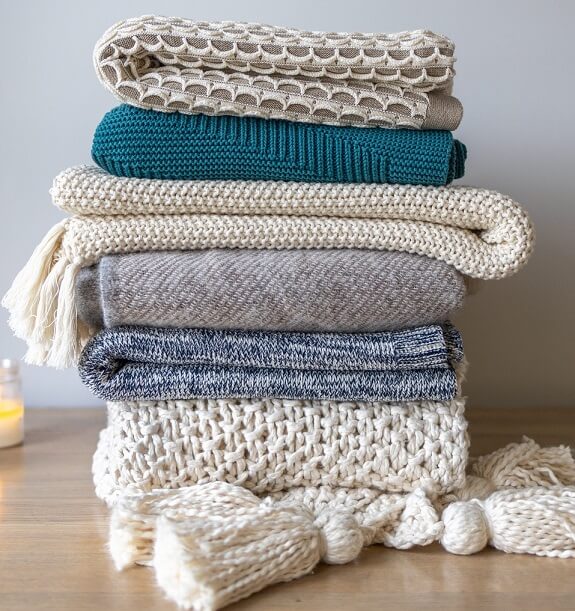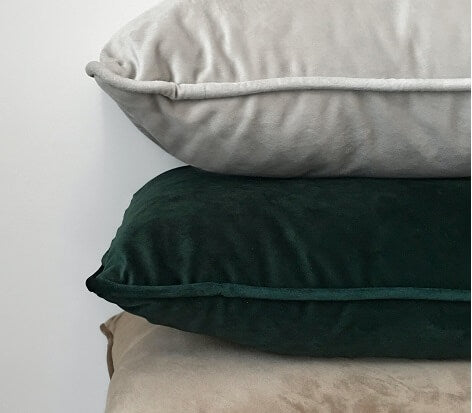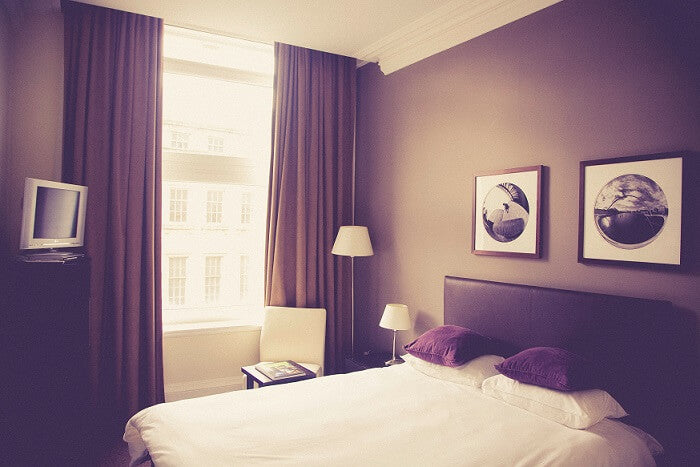In today’s fast-paced world, achieving quality sleep can often feel like a daunting task. Many individuals find themselves battling external disturbances, from bustling city sounds to the unpredictable rustle of nature. To enhance your sleep routine, **using noise cancelling curtains in combination with other sleep aids** can make a significant difference. These innovative curtains can help create a serene environment, allowing you to fully benefit from additional sleep aids such as white noise machines and sleep masks. In this blog post, we’ll explore how to maximize your sleep quality by incorporating noise cancelling curtains and other sleep-enhancing strategies.

Understanding the Benefits of Noise Cancelling Curtains for Sleep
Do noise reducing curtains work? Absolutely—and their benefits go far beyond aesthetics. These curtains are specifically engineered to mitigate external sounds, helping to create a tranquil environment that promotes restful sleep. Made from dense, heavy fabrics, noise reducing curtains absorb and dampen sound waves rather than letting them pass through your space.
By blocking disruptive noises like city traffic, construction, or noisy neighbors, these curtains significantly reduce environmental stressors. The result? Less anxiety caused by noise pollution and a smoother path to falling asleep. If you’ve been wondering, do noise reducing curtains work?—just consider their ability to support deeper, more uninterrupted sleep cycles. They’re a smart, stylish investment in better rest.
In addition to their noise-blocking capabilities, noise cancelling curtains frequently offer thermal insulation. This feature helps maintain a stable room temperature, which is crucial for achieving quality sleep. A well-regulated sleep environment can prevent discomfort from temperature fluctuations, ensuring that you remain cozy and undisturbed throughout the night.
Moreover, noise cancelling curtains can also serve as an effective barrier against intrusive light, creating a darker room that enhances your overall sleep conditions. By blocking noise with curtains, you not only reduce disruptive sounds but also create a more serene and restful environment. This powerful combination of sound and light reduction makes these curtains a comprehensive solution for anyone looking to optimize their sleep settings. Whether you're in a bustling urban area or a quieter suburban neighborhood, blocking noise with curtains can be a valuable investment in improving your sleep quality and overall well-being.
How Noise Cancelling Curtains Work to Block Out External Sounds
Noise cancelling curtains use heavy, dense fabrics like polyester or velvet, often layered to amplify their sound-absorbing properties. These materials are designed to trap sound waves, preventing them from bouncing off surfaces and penetrating your living space. The multilayer construction is crucial, as it enhances the curtain's ability to dampen a wide range of frequencies, from the low hum of traffic to the higher-pitched sounds of city life. By doing so, these curtains reduce the overall noise level, creating a quieter and more serene sleeping environment. Additionally, the visual barrier provided by these curtains blocks out distracting lights, further contributing to a peaceful atmosphere conducive to restful sleep.
Combining Noise Cancelling Curtains with White Noise Machines
While noise cancelling curtains significantly diminish external disturbances, their effectiveness can be further enhanced when paired with white noise machines. These devices generate a consistent, soothing auditory backdrop that helps mask any residual sounds that might penetrate the curtains. The combination of the curtains' sound-dampening capabilities and the white noise machine's ability to cover up intermittent noises creates a highly tranquil sleep environment. This dual approach ensures that sudden disruptions, such as car honks or distant sirens, are less likely to jolt you awake. By using noise cancelling curtains in combination with white noise machines, you create a comprehensive barrier against both persistent and sudden noise intrusions, fostering a more stable and restful sleep experience. This synergy not only makes it easier to fall asleep but also helps maintain deep sleep phases throughout the night, thereby enhancing overall sleep quality.
Is it better to sleep in silence or with noise?Noise has a major impact on sleep. Exposure to too much noise during sleep has immediate effects while we are sleeping, which leads to short-term issues the next day, and over time may result in long-term mental and physical consequences
Enhancing Sleep with Noise Cancelling Curtains and Sleep Masks
Sleep masks are a simple yet highly effective tool for those looking to improve their sleep quality. They work by blocking out light, signaling to your body that it’s time to rest and promoting the natural production of melatonin. This can be especially beneficial for people who are sensitive to light, such as shift workers or those living in urban areas with significant light pollution.
When paired with noise cancelling curtains, the benefits of sleep masks are amplified. The curtains create a quiet, serene environment by blocking external noise, while the sleep mask ensures that any intrusive light is kept at bay. This dual-action approach creates an ideal setting for deep, restorative sleep.
Additionally, sleep masks can be particularly useful for midday naps or when traveling, as they help maintain darkness in less-than-ideal sleeping conditions. Their portability and ease of use make them a convenient complement to the more permanent solution offered by noise cancelling curtains. The combined use of these two aids helps you create a cocoon-like atmosphere, isolating you from the disturbances that typically prevent a good night's sleep.
For maximum effectiveness, choose a sleep mask that fits comfortably and is made of breathable material. Some masks come with additional features such as cooling gel inserts or contoured designs that reduce pressure on the eyes, further enhancing comfort. By integrating both noise cancelling curtains and sleep masks into your sleep routine, you can create a sanctuary-like environment that is highly conducive to achieving high-quality, uninterrupted sleep.
Creating a Peaceful Sleep Environment with Additional Sleep Aids
Creating a serene and restful sleep environment involves more than just minimizing noise and light. Incorporating additional sleep aids can significantly enhance your overall sleep quality. Essential oils, like lavender and chamomile, are celebrated for their calming properties and can be utilized in diffusers or as pillow sprays to create a soothing atmosphere. Similarly, weighted blankets offer a comforting, cocoon-like sensation that promotes relaxation and reduces anxiety, making it easier to drift into deep sleep.
Another effective sleep aid is a humidifier, which maintains optimal humidity levels in your room, preventing dryness that can cause discomfort and disrupt sleep. Humidifiers can be especially beneficial during winter months when indoor air tends to be drier.
For individuals who struggle with temperature regulation during the night, cooling or heating mattress pads can provide a tailored sleep environment that aligns with your body’s needs. These pads help maintain a consistent, comfortable temperature, further enhancing the overall sleep experience.
Incorporating bedtime rituals can also play a crucial role in promoting better sleep. Simple activities like reading a book, practicing mindfulness meditation, or engaging in gentle yoga stretches can signal to your body that it’s time to wind down. These routines help transition your mind and body into a state conducive to sleep.
Using blackout shades in addition to your noise cancelling curtains can provide an extra layer of light control, ensuring that your sleep environment remains as dark as possible. By thoughtfully combining these various sleep aids, you create a holistic approach to improving sleep quality, making your bedroom a sanctuary for rest and rejuvenation.

Choosing the Right Noise Cancelling Curtains for Your Needs
Selecting the right noise cancelling curtains involves considering both functional and aesthetic factors. Start by evaluating the fabric; opt for thick, dense materials such as polyester, velvet, or specially designed acoustic fabrics, which are effective at absorbing sound. The construction is equally important—look for curtains that feature multiple layers to maximize their sound-dampening capabilities.
Measure your windows accurately to ensure the curtains cover the entire area, extending beyond the frame to minimize gaps where sound could seep through. Heavier curtains may require sturdy rods and brackets, so ensure your hardware can support the weight.
Color and style also play a role in your selection. Darker shades are generally more effective at blocking light, which can further enhance your sleep environment. However, you can find a balance between functionality and design by choosing a color and pattern that complements your bedroom decor.
Ease of maintenance is another consideration. Check if the curtains are machine washable or if they require special cleaning methods. Finally, consider additional features such as thermal insulation, which can help regulate room temperature, contributing to a more comfortable sleep environment.
By thoughtfully selecting noise cancelling curtains, you can significantly enhance your sleep quality, creating a tranquil, restful space that aligns with your lifestyle and aesthetic preferences.
Practical Tips for Integrating Noise Cancelling Curtains into Your Sleep Routine
To effectively integrate noise cancelling curtains into your sleep routine, begin by assessing the primary sources of disturbance in your sleeping environment. Once you've identified these issues, install your noise cancelling curtains to minimize unwanted noise and light. To further enhance your sleep quality, pair the curtains with other sleep aids like white noise machines and sleep masks. Establish a consistent bedtime routine that might include activities such as reading a book, practicing meditation, or engaging in light stretches. Ensure that your sleep environment remains conducive to rest by maintaining optimal room temperature and humidity levels. Consider using essential oils or weighted blankets to create a calming atmosphere. Finally, maintain a regular sleep schedule to help regulate your body's internal clock, allowing you to reap the full benefits of your enhanced sleep environment.






